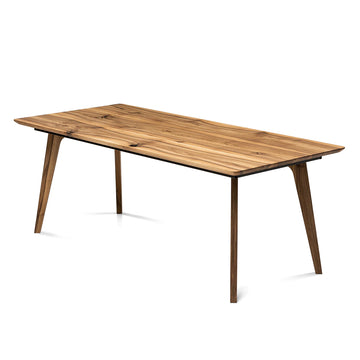Introduction to handcrafted furniture
Handcrafted furniture is a true testament to craftsmanship and artistry. Unlike mass-produced furniture, handcrafted pieces are made with meticulous attention to detail and a deep understanding of the materials used. Each piece is carefully crafted by skilled artisans who have honed their craft over years of experience. From the selection of the finest wood to the intricate joinery techniques, every step of the process is done by hand, resulting in unique and one-of-a-kind furniture pieces. By understanding the process behind handcrafted furniture, you can truly appreciate the skill and dedication that goes into creating these timeless pieces that will be treasured for generations to come.

The beauty of handcrafted furniture
Handcrafted furniture possesses a unique beauty that sets it apart from mass-produced pieces. Each piece is carefully crafted by skilled artisans who take pride in their workmanship. The process begins with selecting high-quality materials that will ensure durability and longevity. From there, the artisans meticulously shape, carve, and sand the wood, paying attention to every detail. The result is a one-of-a-kind piece that exudes character and charm. Handcrafted furniture not only adds a touch of elegance to any space but also tells a story of craftsmanship and artistry.
Materials used in handcrafted furniture
The materials used in handcrafted furniture play a vital role in the overall quality and durability of the piece. While mass-produced furniture often relies on synthetic materials and shortcuts, handcrafted furniture is crafted with a meticulous attention to detail and a focus on using high-quality, natural materials. Artisans carefully select hardwoods such as oak, mahogany, and cherry for their strength and beauty. These woods are then carefully cut, shaped, and joined together using traditional woodworking techniques, resulting in furniture that not only looks exquisite but also stands the test of time. Additionally, handcrafted furniture often incorporates other natural materials such as leather, cotton, and wool, further enhancing its appeal and craftsmanship. By understanding the importance of using the right materials, one can truly appreciate the artistry and value of handcrafted furniture.
Tools and techniques used in handcrafted furniture making
Handcrafted furniture making is a meticulous process that requires a wide range of tools and techniques. From the traditional chisel and mallet to the more modern power tools, each tool plays a crucial role in shaping and refining the wood. The use of hand tools allows artisans to have more control over the final product, ensuring precision and attention to detail. Additionally, various techniques such as joinery, carving, and finishing are employed to create unique and visually stunning pieces of furniture. Understanding the tools and techniques used in handcrafted furniture making not only enhances one's appreciation for the artistry involved but also enables individuals to create their own masterpieces.
The process of designing handcrafted furniture
Designing handcrafted furniture is a meticulous process that requires a deep understanding of both aesthetics and functionality. It begins with a careful analysis of the space where the furniture will be placed, taking into consideration factors such as the room's dimensions, natural lighting, and existing decor. The designer then sketches multiple concepts, exploring different shapes, materials, and finishes, while also considering the ergonomics and comfort of the piece. This iterative process allows for creativity and innovation, resulting in furniture that not only serves its purpose but also becomes a work of art in its own right. The attention to detail and craftsmanship involved in handcrafted furniture design ensures that each piece is unique and tailored to the client's specific needs and preferences.
Choosing the right wood for handcrafted furniture
Choosing the right wood is a fundamental aspect of creating handcrafted furniture. Different types of wood have unique characteristics that can greatly impact the final product. For example, hardwoods like oak and mahogany are known for their durability and strength, making them ideal for furniture that needs to withstand daily use. On the other hand, softwoods like pine and cedar are more lightweight and easier to work with, making them suitable for intricate detailing. Additionally, the color, grain pattern, and natural defects of the wood can add personality and uniqueness to the piece. By understanding the qualities of different woods and selecting the right one for each project, furniture artisans can ensure that their creations are not only visually appealing but also long-lasting and functional.
Joinery techniques in handcrafted furniture making
Joinery techniques are a fundamental aspect of handcrafted furniture making. These techniques involve joining different pieces of wood together to create a sturdy and durable structure. While there are various types of joinery, such as dovetail, mortise and tenon, and finger joints, each technique serves a specific purpose and requires precision and skill. Understanding and mastering these joinery techniques is essential for creating furniture that not only looks beautiful but also withstands the test of time. By utilizing these techniques, furniture makers can create pieces that are not only functional but also works of art.
Finishing touches and detailing in handcrafted furniture
Finishing touches and detailing play a vital role in the creation of handcrafted furniture. While the overall design and construction are important, it is the intricate details and carefully applied finishes that truly elevate a piece to a work of art. From hand-carved accents to meticulously applied stains and varnishes, these final touches add depth, character, and a unique touch to each piece. The attention to detail in handcrafted furniture not only enhances its beauty but also ensures its longevity and durability. Whether it's the delicate inlay work or the expertly executed joinery, these finishing touches are what set handcrafted furniture apart from mass-produced alternatives.
Benefits of handcrafted furniture
Handcrafted furniture offers a range of benefits that set it apart from mass-produced alternatives. Firstly, handcrafted furniture is made with meticulous attention to detail, ensuring superior quality and durability. Artisans take the time to select the finest materials and employ traditional techniques, resulting in furniture that not only looks stunning but also stands the test of time. Additionally, handcrafted furniture allows for customization, enabling you to have a one-of-a-kind piece that perfectly suits your style and needs. Furthermore, purchasing handcrafted furniture supports local artisans and promotes sustainable practices, as these pieces are often crafted using responsibly sourced materials. By investing in handcrafted furniture, you are not just acquiring a beautiful and unique piece, but also supporting a timeless art form and making a sustainable choice for your home.
Conclusion: The timeless appeal of handcrafted furniture
Handcrafted furniture has a timeless appeal that cannot be replicated by mass-produced pieces. The process of creating handcrafted furniture involves a deep understanding of wood, craftsmanship, and attention to detail. Each piece is carefully designed and meticulously crafted, ensuring that it not only looks beautiful but also stands the test of time. Handcrafted furniture is made with love and passion, often using traditional techniques that have been passed down through generations. The result is a piece of furniture that is not only functional but also a work of art, adding a touch of elegance and sophistication to any space. Investing in handcrafted furniture means investing in quality, durability, and a piece that will be cherished for years to come.





















